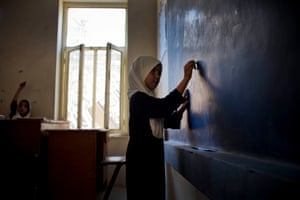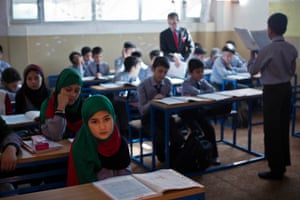In his 1996 book, The Clash of Civilizations and the Remaking of the World Order, Samuel P. Huntington prophesied that the 21st century would be one of clashes between at least six religious-rooted civilizations: Western Civilization (Western Europe and the USA), Orthodox Christian (Russia and others), Hindu, Sinic (Confucian China, Korea, and Vietnam), Buddhic (South Asia, Tibet, and Mongolia), and Muslim. The age of the nation-state is over; fasten your seatbelts for a wild clash of civilizations. Without natural borders like the other civilizations, the Muslim world is in conflict with all its neighbors. From the Muslim regions of Thailand, Myanmar, China, and the Philippines in Asia to colonial created half-Muslim and half-Christian states of Africa, and between the Muslim migrants to Europe and the USA, Islam is at war with its neighbors.

Detail from “The Battle of the Milvian Bridge” (painted 1520–24) by Giulio Romano.
Nuclear-armed Muslim Pakistan and increasingly Hindu India under the
BJP (Hindu Nationalist Party) have been at war for almost a century over
the province of Kashmir. Nuclear Jewish Israel threatens to destroy any
Muslim neighbor that threatens its survival. Increasingly Orthodox
Russia is pushing back at Western expansion into its civilizational
territory, and Christian America and Western Europe are currently at war
in Afghanistan, Iraq, Syria, Yemen, Nigeria, and elsewhere to resist
the Muslim drive to restore the lost unity of the Islamic world and the
leadership of a single caliph.Each civilization and religious-based people that seeks to restore its once great but now lost greatness cites its holy books and history as justification. Muslim fighters cite the great victories won by the prophet Mohammad and the early caliphs over pagans, Jews, and Christians as justification for their wars to expel “Crusaders and Jews” from their sacred lands and so-called “terrorists” take this struggle to Europe and the world. Osama bin Laden wrote that he organized 9/11 to show his opposition to the stationing of American (Christian) troops in Saudi Arabia, the protector of the sacred cities of Mecca and Medina. The supporters of Israeli Dr. Baruch Goldstein compared his 1994 massacre of 29 worshippers in a Hebron mosque in the occupied West Bank to God’s instructions in Judges 2:2-3, “And ye shall make no league with the inhabitants of this land; ye shall throw down their altars … (for they are) thorns in your sides, and their gods shall be a snare unto you.”
As long as religions were armed with swords, chariots, and bows and arrows, religious warfare was limited. But today nuclear bombs, chemical and biological warfare, and man-made epidemics put the entire human race at risk. All world empires have been inspired by some form of national destiny but when this destiny becomes infused with a divine purpose there is no compromise with the enemy.
Read more >
&
+++

































